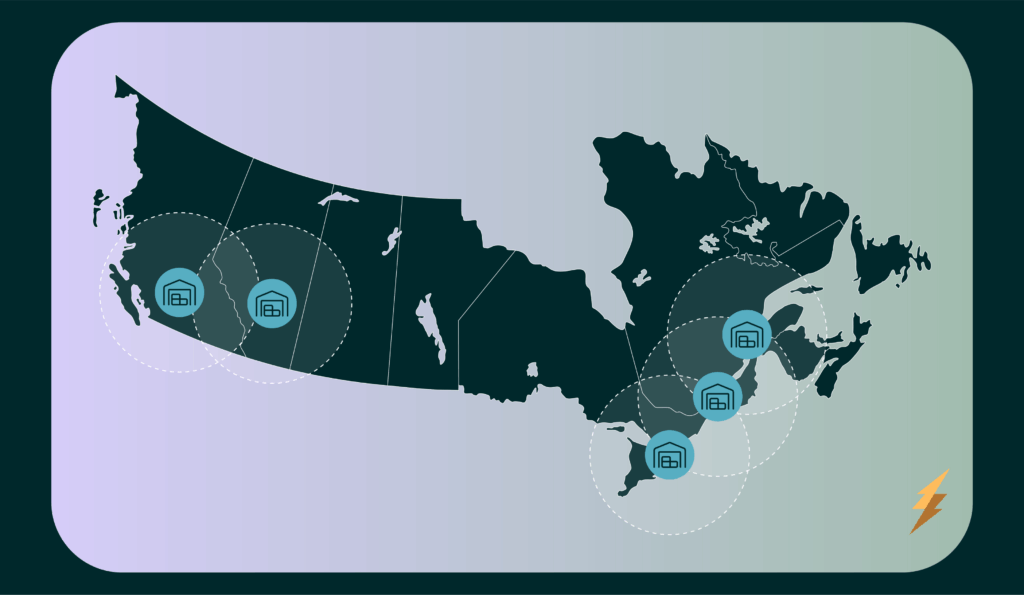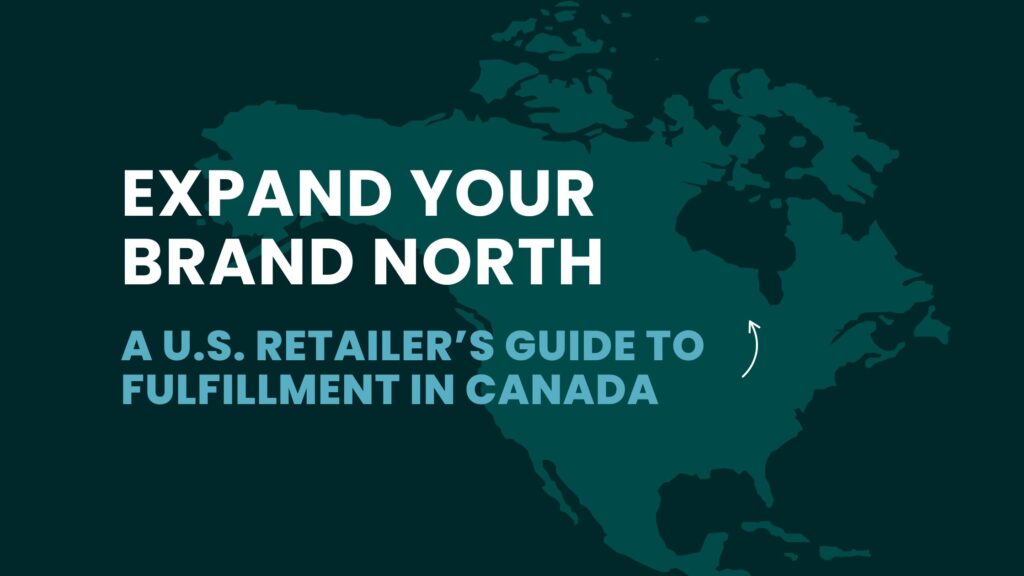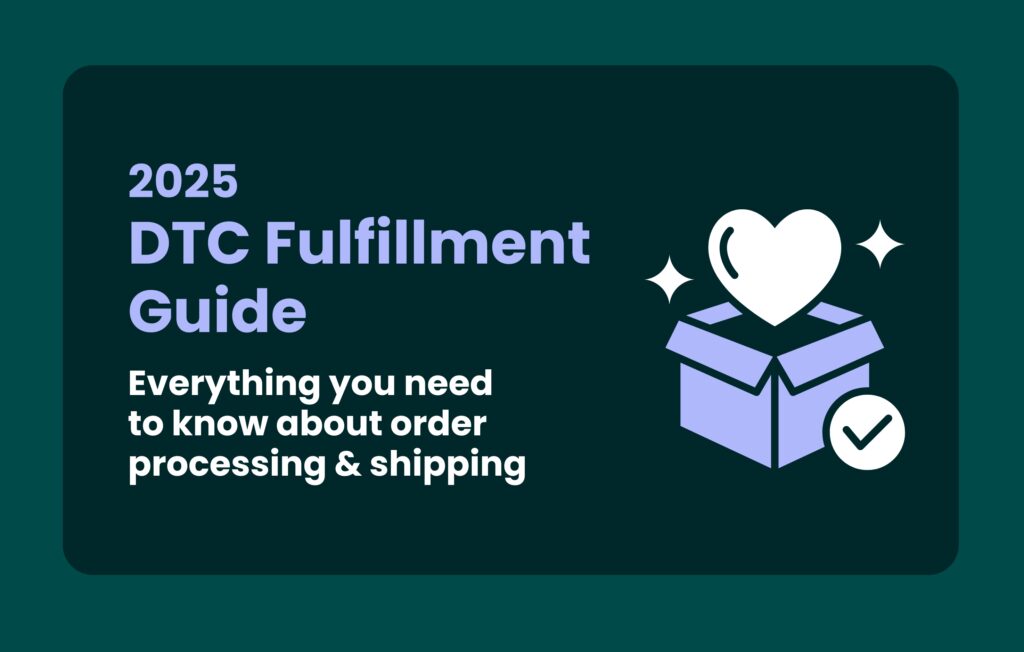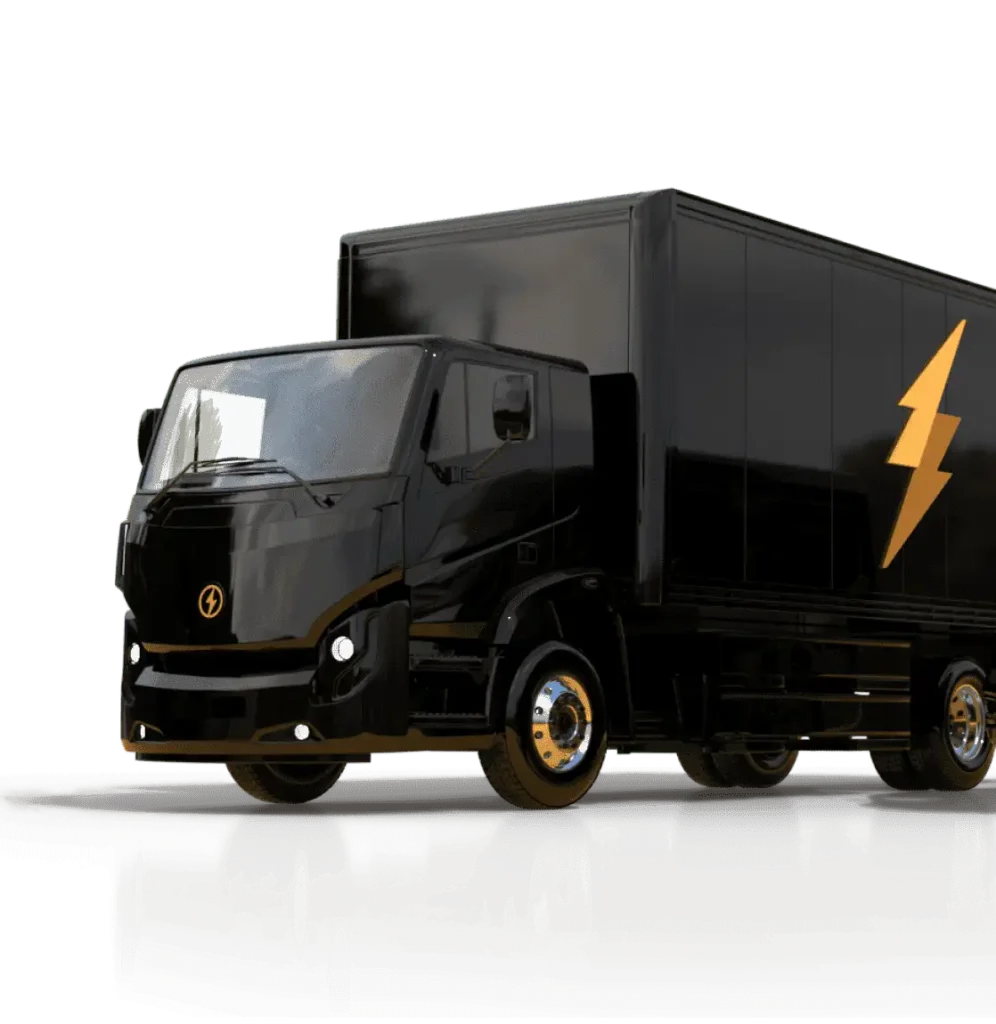The practical, no-fluff guide for U.S. brands wanting to expand ecommerce fulfillment in Canada
Shipping across the border can feel complicated. Customs, taxes, delays – it’s a lot. But here’s the truth: if you want to grow your brand in Canada, you need to figure out how to get products to your customers quickly, without breaking the bank.
That’s where a domestic fulfillment process comes in. Get it right, and you’ll have fewer errors, faster deliveries, lower costs and much happier shoppers.
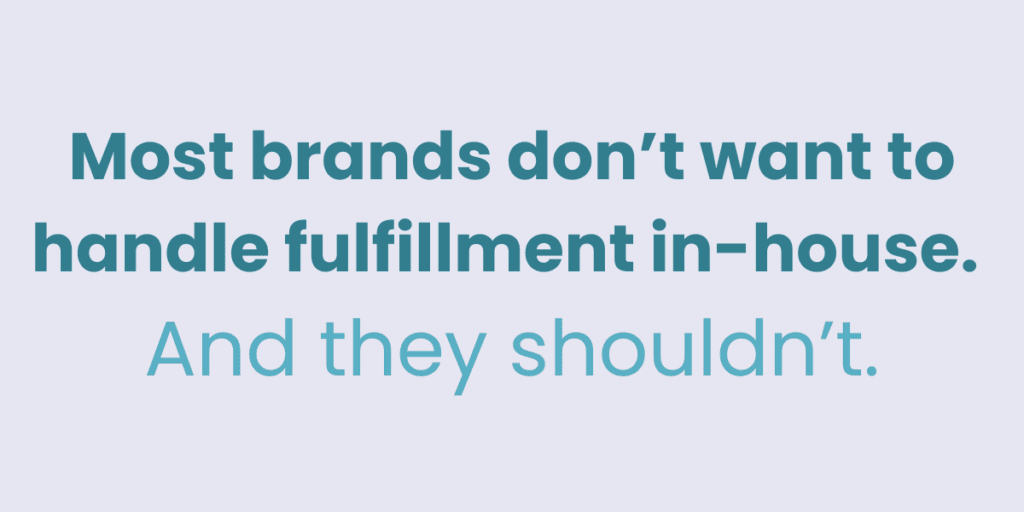
Most brands don’t want to handle this in-house, and they shouldn’t. A good third-party logistics partner (3PL) can do it faster, cheaper, and with fewer mistakes. That means your team stays focused on growth, while experts handle the picking, packing, and shipping.
The key is finding a domestic fulfillment partner that actually knows what they’re doing, especially when it comes to ecommerce fulfillment in Canada. One that’s built for speed, transparency, and scale.
Let’s break down what that setup looks like (and how to get it right the first time).
What is Ecommerce Fulfillment?
Ecommerce fulfillment is everything that happens after a shopper clicks “buy.” It’s not just shipping — it’s storing your inventory, picking and packing orders, getting them out the door fast, and making sure they land in the right hands without drama.
Done right, fulfillment feels invisible. No mispicks. No broken products. No customer support headaches.
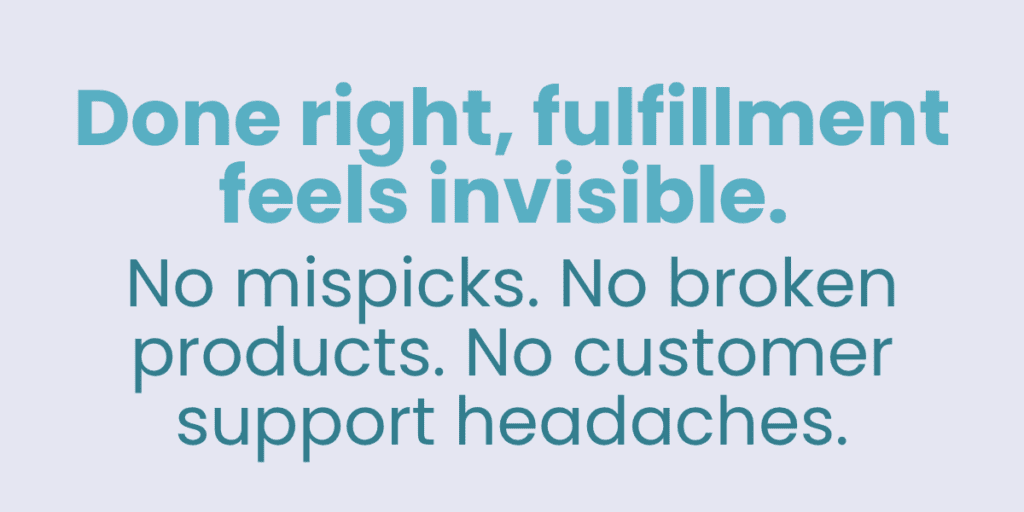
But doing it right takes work, and scale makes it harder. That’s why so many brands team up with a fulfillment partner. A good one brings serious operational chops: smart inventory management, fast fulfillment, real-time tracking, and reliable delivery.
If you’re thinking about expanding into Canada, or already shipping to Canada from the US, having the right partner on the ground is key. With expert fulfillment services in Canada, you can skip the border pain and focus on what actually grows your business.
Canadian ecommerce is booming. And smart U.S. brands are already riding the wave.
If you’re getting orders from Canada, or you’re looking for your next easy growth lever, it’s time to stop treating Canadian shoppers like international strangers.
The Problem With Cross-Border Shipping
Let’s call out the main pain points of fulfilling Canadian orders from the U.S.:
- Slow delivery. Border delays and customs clearance = unhappy shoppers.
- High costs. Shipping rates and duties eat into your margin and result in cart abandonment
- Costly returns. Returns management for cross-border orders is especially challenging and expensive.
Even if demand is strong, slow fulfillment will kill your growth. Fast.
Because here’s the thing: shipping from the U.S. to Canada?
It’s slow. It’s expensive. And it’s full of surprises (none of them good).
- Long transit times
- Border delays
- Surprise duties at the door
Not a great customer experience. And definitely not scalable.
The fix? Domestic fulfillment in Canada.
When you warehouse inventory locally, you unlock:
- Faster delivery
- Cheaper shipping
- No customs friction
- Happier shoppers (and more of them)
A local 3PL with the right infrastructure, including real carrier relationships, smart inventory placement, and returns support, makes it easy to scale without the usual headaches.
Canada’s ready. The demand is there. Now it’s just about showing up.
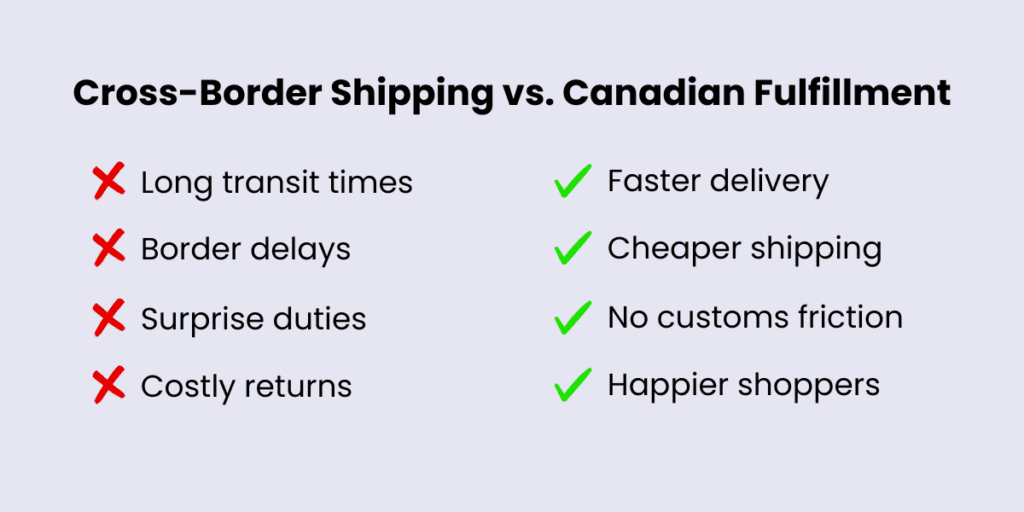
Case in point: Carpe.
Carpe teamed up with GoBolt, moved fulfillment into our Toronto facility, and unlocked a whole new level of scale: faster shipping, sustainable last mile delivery, and zero customs headaches.
Expanding your ecommerce operations into Canada?
Here’s how to set up ecommerce fulfillment in Canada that delivers speed, savings, and shopper satisfaction.
Step 1: Choose a 3PL with Canadian Fulfillment Centers
Not all 3PLs are created equal. To effectively serve Canadian shoppers, partner with a 3PL that has fulfillment centers within Canada, preferably near major hubs like Toronto or Vancouver.
This proximity ensures:
- Faster delivery times
- Reduced shipping costs
- Improved shopper experience
For instance, the Greater Toronto Area (GTA) offers access to Canada’s largest population center and is in close proximity to several major U.S. border crossings.
Step 2: Ensure Compliance with Canadian Regulations
Canadian product regulations differ from those in the U.S.
To avoid regulatory delays:
- Engage a Canadian regulatory consultant to navigate labeling and compliance requirements.
- Consider relabeling products to meet bilingual packaging standards.
Brands like Carpe successfully managed this by working with regulatory firms and implementing relabeling processes before shipping products into Canada.
Step 3: Set Up Canadian Tax and Banking Infrastructure
Navigating Canada’s tax system is crucial:
- Register for a Canadian Business Number (BN) for tax purposes.
- Understand and register for applicable taxes like GST/HST, which vary by province.
- Consider setting up a Canadian bank account to facilitate transactions.
Consulting with a Canadian tax firm can streamline this process and ensure compliance.
Step 4: Optimize Last Mile Delivery with the Right Carriers
Efficient last mile delivery is key to shopper satisfaction. Utilizing a diversified carrier strategy and a mix of national and local carriers will help balance speed and cost. For example, GoBolt combines third-party carriers with its in-house GoBolt Parcel network to provide fast, carbon-neutral deliveries across Canada.
Step 5: Leverage Technology for Visibility and Control
A robust fulfillment partner should offer technology that provides:
- Real-time order tracking
- Inventory management
- Performance analytics
- Seamless integration with ecommerce platforms like Shopify, Amazon, and ERPs like NetSuite.
GoBolt’s merchant portal enables brands to monitor operations and make informed decisions without being physically present in Canada.
Step 6: Prioritize the Canadian Shopper Experience
Delivering a local experience builds trust with shoppers. By removing barriers and delivering a simplified experience, you foster customer loyalty and encourage repeat business.
- Provide clear delivery timelines
- Offer free or cheaper shipping options at checkout
- Provide easy and affordable returns within Canada
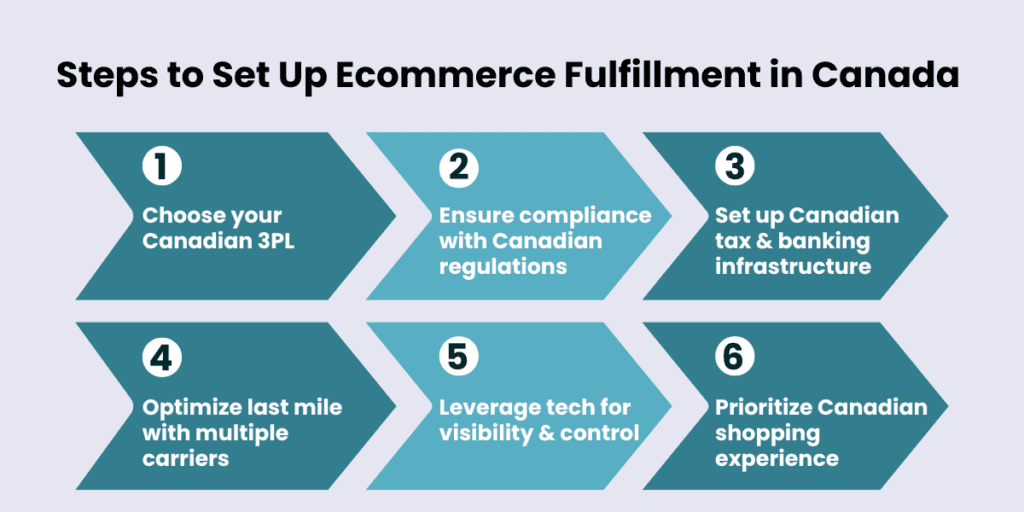
How Carpe Mastered Ecommerce Fulfillment in Canada
Carpe is a sweat solutions brand based in the U.S. When demand started growing in Canada, they realized their old setup (shipping to Canada from the U.S. using DDU) was creating real friction.
They partnered with GoBolt and shifted fulfillment to our GTA-based warehouse, giving them two main benefits:
- Faster delivery
- Reduced shipping costs
🚀 The Results
- ~100,000 units fulfilled to Canadian customers
- 10,000+ carbon-neutral last-mile deliveries with GoBolt Parcel
- Full national coverage
- Zero guesswork with GoBolt’s real-time merchant dashboard
Final Thoughts: Scale Ecommerce Fulfillment in Canada the Smart Way
Canada isn’t an afterthought, it’s a high-value, low-barrier market. But only if you get the fulfillment strategy right.
Setting up domestic ecommerce fulfillment in Canada doesn’t have to be hard. With the right partner, it’s fast, affordable, and scalable.
Looking to simplify shipping to Canada from the U.S.? Let’s talk.
